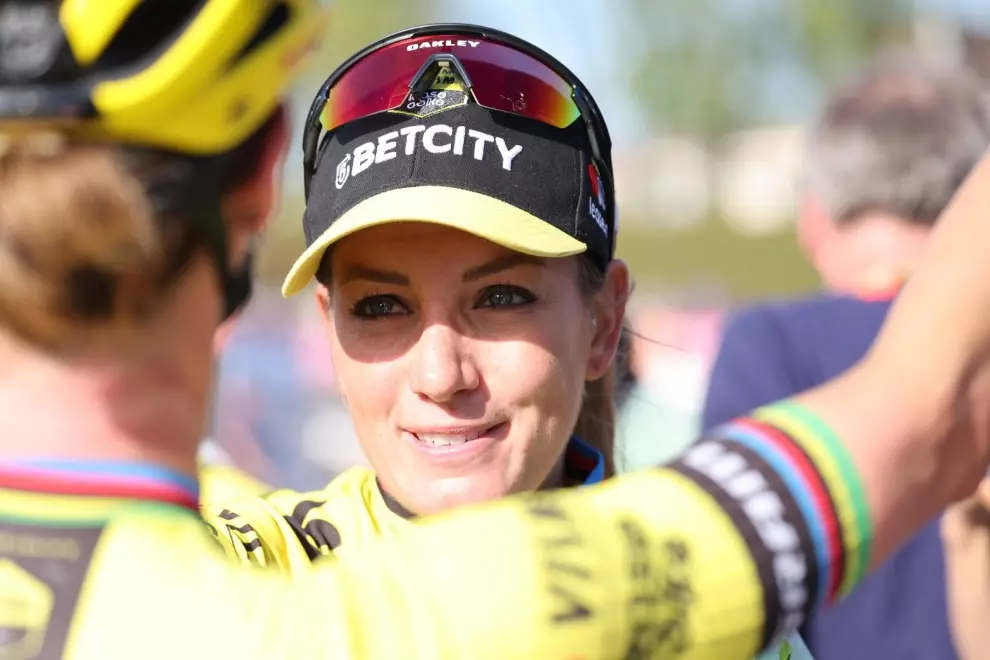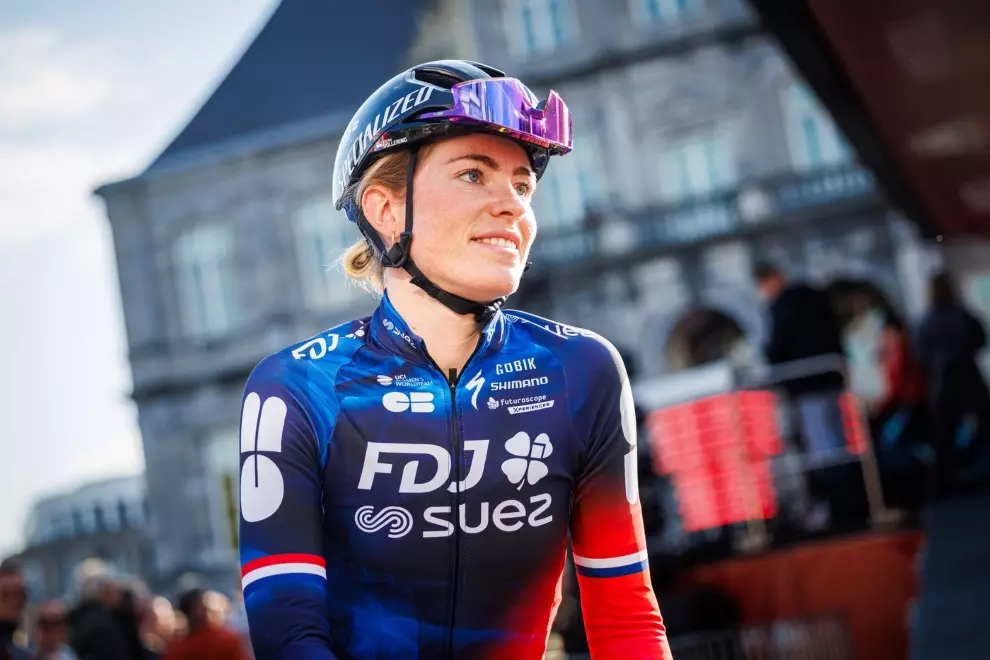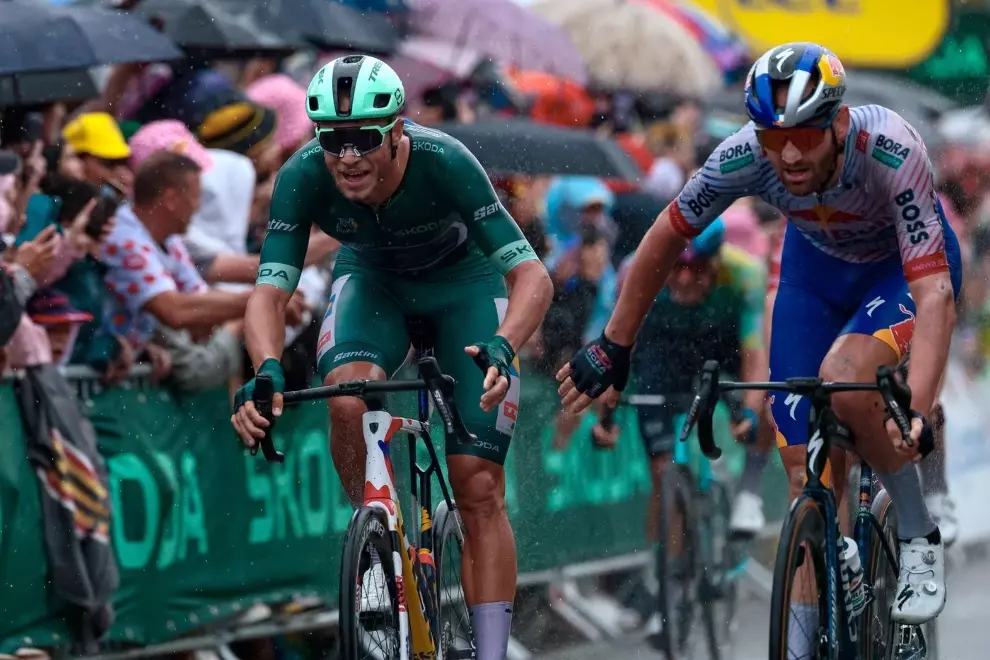As you might have heard before, the Škoda success story began with two founding fathers, Mr Laurin and Mr Klement, in a little bicycle workshop on one snowy day in December 1895. Designer bikes led to motorcycles and subsequently to cars we all know today. It’s only natural that Škoda eventually became Tour de France’s official partner and official vehicle partner in 2004, providing about 250 vehicles for the official Tour fleet each year that comprises, most notably, of Škoda OCTAVIA Combi and Škoda SUPERB models. Their history began 125 years ago with a bicycle, and they have never entirely left it out since.
Moreover, Škoda isn’t just the most prevalent brand of cars at the Tour. Known for supporting talent, they also strengthened their commitment to support cycling by sponsoring the “sprinter’s” Green Jersey since 2015 and, for a period between 2004 and 2014, also the White Jersey for the best young rider. Besides their involvement at Le Tour, Škoda, even though not primarily a bicycle manufacturer, officially supports a wide range of cycling races such as the L’Etape du Tour, Paris-Roubaix, Liège-Bastogne-Liège, La Flèche Wallonne, Paris-Nice, Critérium du Dauphiné and La Vuelta. The last three races mentioned also get their Green Jersey points classifications sponsored by Škoda.
But let’s take a closer look at each distinctive group of cars one can spot at La Grande Boucle. Each group not only has its own unique colours, decals and purpose, but also carries a rich history. A car at a bike race might seem contradictory, but the following paragraphs beg to differ.
Race Director’s Leading Car
When you catch a glimpse of ‘Velvet Red’ on the road, you know that a stage is about to start. The Škoda SUPERB with its characteristic cap visor-like attachment above the windscreen and custom Le Tour and Škoda decals hosts none other than Christian Prudhomme, A.S.O cycling and Tour’s race director. The car is not only a sight to behold as it leads on the peloton all the way to the Champs Élysées, but its main purpose is to serve as the race’s literal control centre. It’s equipped with a small two-way radio station with four channels, over which Mr Prudhomme can receive information and give orders. The sizeable retractable glass roof isn’t just a show-off feature – it allows Mr Prudhomme to stand up and have the best view of the peloton before each stage launch so he can inspect and evaluate every detail. And, of course, wave the flag at “Kilometre Zero”. All support cars, riders and even fans rely on the Red Car to ensure the spectacle of the Tour to unfold safely, justly and smoothly. A symbiosis indeed.

In 2015, Škoda introduced a completely redeveloped flagship version of the SUPERB as the Red Car, and this year, it will be replaced by the SUPERB iV model, a brand new plug-in hybrid, featuring spacious stylish interior and state-of-the-art technology. Besides navigating and leading the race, the car also hosts famous VIP guests, such as the current French president and others. Furthermore, the Red Car is also the only vehicle with the privilege to cross the finish line alongside the riders.
As Christian Prudhomme himself said of the Red SUPERB: “Škoda is an essential partner for the Tour de France as well as for the races that we organise. During the Tour de France, the red number 1 Škoda is more than just a car, it is a control tower, an office, and a valued and trusted friend. We are thrilled to extend this cooperation with an efficient, reliable and dynamic partner.”
Team cars
Each team has two cars that follow the peloton in an order determined by the ranking of the team’s lead rider at the beginning of the stage. The line-up is about more than prestige: the nearer you are to the front, the quicker you can respond to a rider in trouble. Each vehicle is a cycling workshop on wheels and carries a spare bike for every rider (or even more, in some cases), a multitude of wheels, a bike repair outfit, a feeding station, a riding counsellor, a hotspot for communications along with a mechanic in the back seat ready to jump out at a moment’s notice. A radio feed sent to the vehicles — which heavily feature mainly Škoda OCTAVIAs across teams — reports breakaways and crashes, and gives cars permission to break ranks. All cars have a direct line to the race director’s Red SUPERB and Christian Prudhomme himself to consult any situation that might occur. Because in Le Tour, mere split seconds make the winner, and the team cars’ crews know this just as the riders do.

The team cars elegantly weave directly through the body of riders and need to accelerate and spring to help at will, which means the drivers need to perfectly merge with the peloton’s pulse and rhythm to prevent any collision. As Stephen Roche, a former Irish cycling titan and the 1987 Triple Crown of cycling holder noted at the 2014 Tour when he was driving a Škoda VIP car: “Almost every driver is a former cycling pro — it’s all about understanding the flow of the peloton. For example, if there is a crosswind I know how the riders will line up. It’s exhausting, but you can’t lose concentration.”
Mavic’s neutral yellow support vehicles
If you’re a racer in trouble, you know that the colour yellow means you’re getting out of it soon when your team’s car is further than you might like. Mavic’s fleet of specially adjusted Škoda SUPERBs is there to accompany the racers and step in when an accident occurs or the weather goes awry. The cars carry spare tyres, chains, cranksets, complete bicycles or even accessories like raincoats. Riders can still worry about punctures, crashes or other unexpected problems on the road, but they know there is always a Mavic car nearby to take care of that so they can fully concentrate on their performance and take it to the moon.
When Chris Froome and two other racers suffered that infamous Tour collision with a motorcycle that came to an abrupt halt on the track in 2016, it was the Mavic’s Škoda SUPERB that was there to help. At first, when Froome realized that his bike is totalled and the stage finish is near, he took to running because his team car was blocked in the jam and five minutes behind. Then one of the nearby Mavic cars jumped to action and supplied him with a spare bicycle.
Škoda Tour de France Hospitality Programme cars
Last but not least, there are the polished and decaled Škoda SUPERBs iV that will chauffeur around the lucky winners of the Hospitality Programme who get to experience the Tour through a once-in-a-lifetime experience – by riding in front of the peloton in a car, flying over it in a helicopter and enjoying three days of genuine Tour atmosphere up close with all expenses paid.

Regarding this year’s Tour de France – after the virtual Tour took place on Zwift in July – the real-world one will be no less exciting compared to previous years. From Nice to Paris, the course of 21 stages will never cross any French border, with a total of 6 regions and 32 departments travelled through. There will be, among others, eight mountain stages with mountain-top finishes, three overall hilly stages and twelve new stage cities. The cyclists and their support cars will cover 3,470 km together.
So when you see the riders cross the finish line on the Champs-Élysées in September, do applaud them, but spare a thought for the men and women in the supporting cars. It may not be a glamorous position in the limelight like the one of the racers, but somebody needs to do it in order for everyone else to enjoy the Tour spectacle without interruption.







